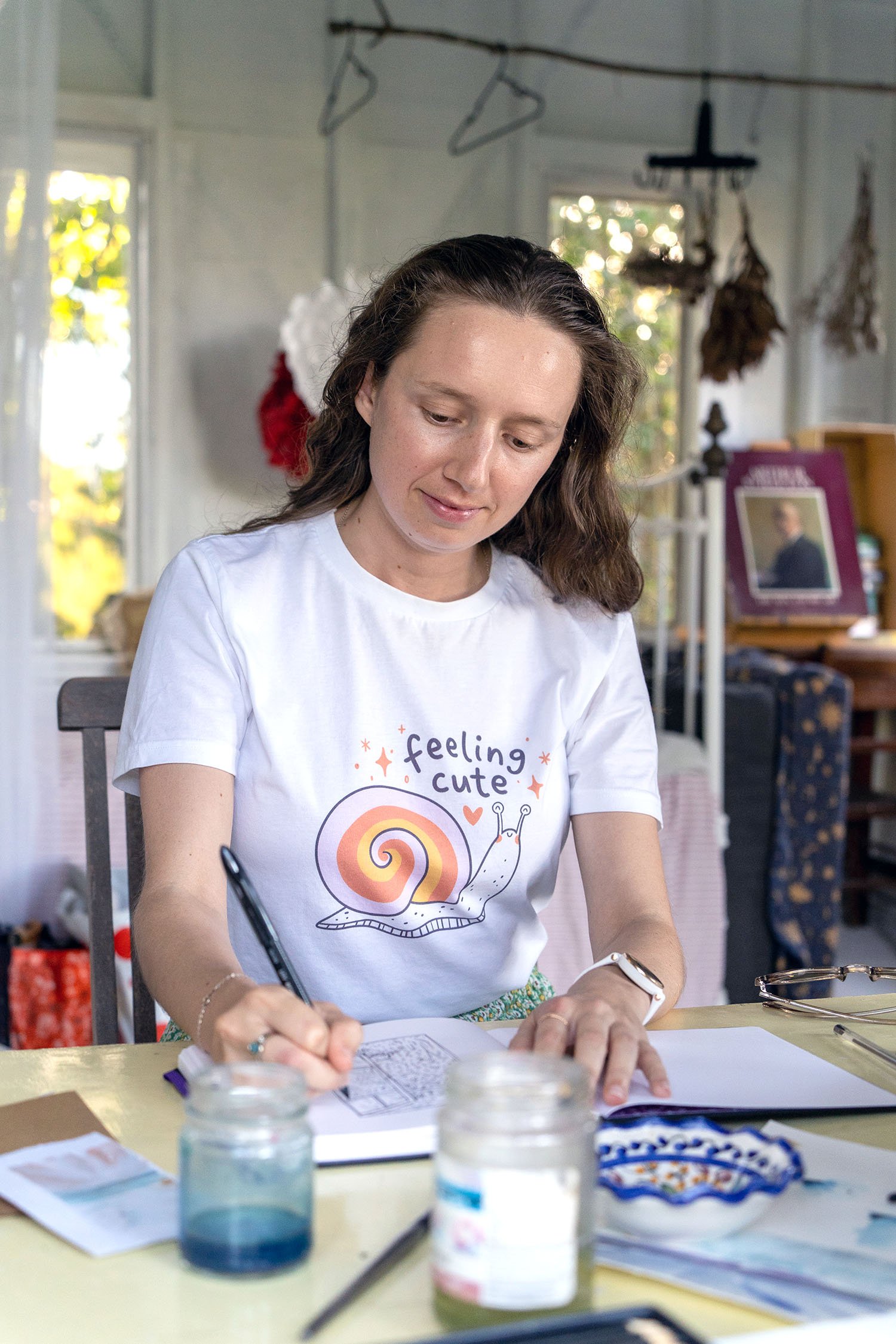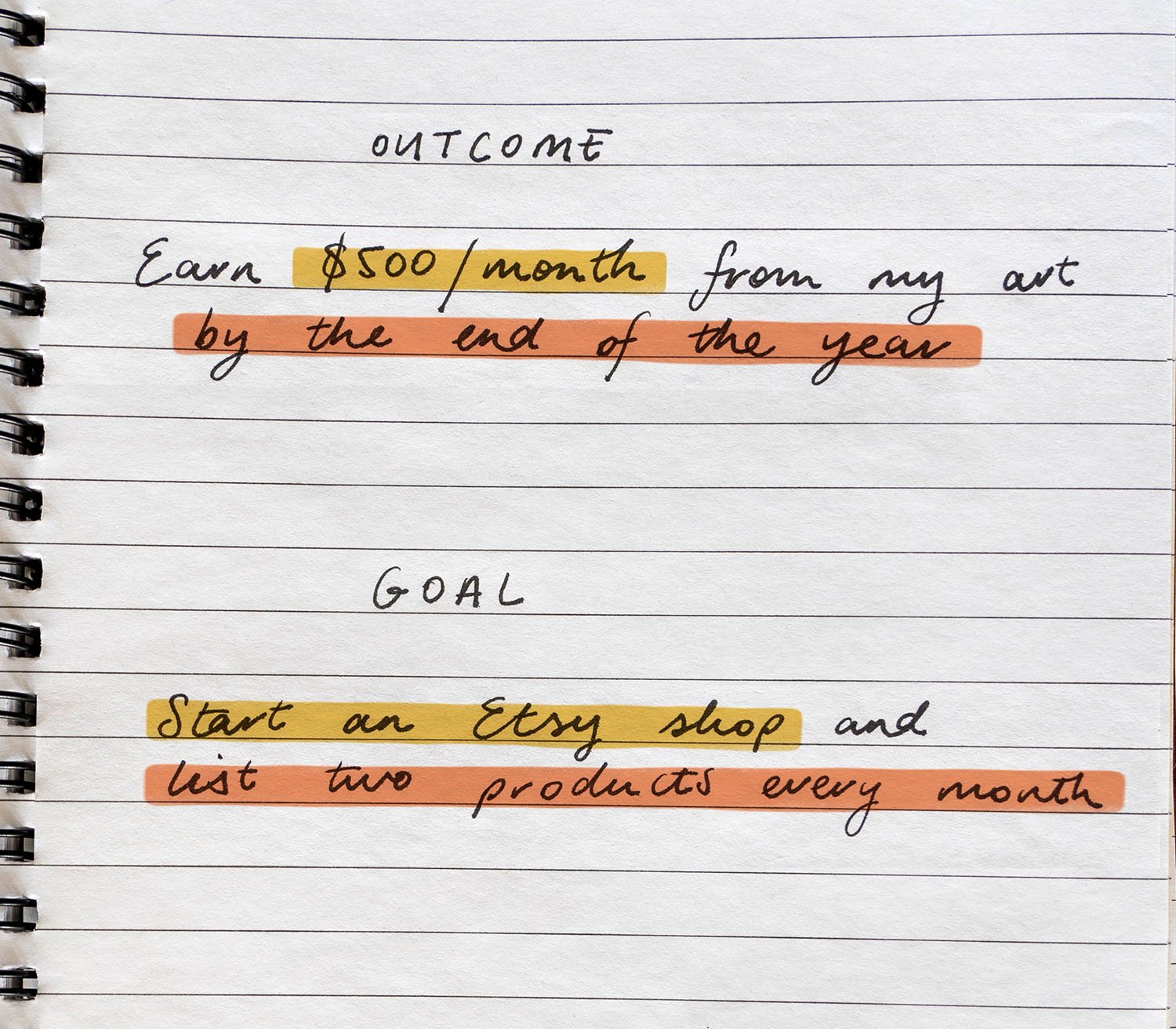3 Tips for Setting Goals for your Artistic Practice and Art Business
Whether it's the start of a new year or just a time to refocus, planning goals for your art can help keep your artistic practice and your business on track. Here are a few tips that have helped me set my own achievable goals!
#1 - Focus on what you can control
Goals and outcomes can feel like the same thing, but I find it really helpful to view them differently. A goal is something that we want to achieve and can actively work on, whereas an outcome is a result we hope to get out of something we’ve been working on but can’t actually control.
Embracing this difference has really changed how I approach my own goals!
My previous goals were based on metrics I can't control like how many sales I would make or how many followers I would have by a certain date. I could do everything in my power to achieve these numbers and still not reach them because I can’t control social media algorithms.
I now see these metrics as outcomes I can work towards, and refocus my time and energy on goals I can control that will hopefully push me in the direction of the outcomes I desire. This way it means my success isn’t relying on external metrics or things I have no control over.
Instead, my goals will be things like ‘I want to practise my art 3 times a week and post it to Instagram’ because this will help me improve my skills and increase my chances of professional illustration opportunities.
When you’re thinking of something you want to achieve, ask yourself whether you have direct control over that happening or not. If you do have control over something, it's a goal but if you don’t then it’s an outcome. You can then decide what goals you can action that give you the best chance of achieving that outcome.
For example, if you want to be earning $500/month from your art in a year's time but you don’t have any products yet, that can be the outcome you’re working towards but your goals will be the actions that you’ll take to get closer to that outcome.
You might have a goal to set up an Etsy shop and list 2 products every month in your store. This way, even if you don’t end up hitting that $500/month target, you’ll be closer to it and you can still achieve your goal of listing 2 products every month and congratulate yourself on achieving that goal. In that time you’ll also have learnt a lot about selling on Etsy which can help you set new, more refined goals towards achieving your desired outcome.
Sometimes things take longer than we’d like them to, but by setting all of our hopes and expectations on things like metrics that we can’t control we run the risk of disappointment and losing motivation.
That’s why it’s important to set goals as things we can control, allowing us to grow and feel accomplished when we do achieve them!
#2 - Prioritise what’s most important to you
There’s always too many things we’d like to do but there is a finite amount of time and energy we have each day. That’s why I like to group my goals into three priority categories because then I know which goals to focus on first and which goals are a nice bonus if I have time left to do them.
Goals that have the highest priority go in my ‘would be amazing to achieve’ category, whilst medium priority goals go in my ‘would be great to achieve’ category, and finally my lowest priority goals go in my ‘would be nice to achieve’ category. These are usually things that aren’t important but are cute projects that I’d like to do.
The goals listed in the highest priority category are super important to me and are what I will focus most of my energy on but when I need a break from that or when I have a bit of extra time, I can switch my focus to goals in the next priority category. Then if I find myself procrastinating from the harder tasks or just have some free time, I can work on the little projects in my lowest priority category.
I find this system works fairly well for me because it ensures I’m not ignoring anything I need or want to do because everything is on the list, but it also helps me not feel bad about not getting around to everything because I acknowledged which tasks had a lower priority to begin with.
#3 - Use the SMART acronym for setting goals
You may have heard about SMART goals before at school or work because they always come up in presentations, but it is a useful tool. The acronym is really just a set of guidelines for setting goals that are achievable and there are a few variations but generally it stands for:
Specific
Measurable
Actionable
Realistic, and
Time-bound
The idea is that to set goals that are clear and achievable, they need to meet these criteria.
Being specific about what your goals are will help you know exactly what needs to be done to action your goals. Rather than simply saying you want to draw more, make it more specific by adding details and numbers to your goal, like how many times you’d like to draw each week or what time of day you’d like to draw.
By adding such specific details, your goals will be more measurable which helps you keep track of whether you’re achieving the results you want which can in turn help you stay motivated and on target.
You also want goals that are actionable, focusing on things you can actually control and actively work towards.
They should be realistic so although it’s great to be ambitious, it’s important to be realistic about what you can get done in the time you have available. Challenges can be great, just make sure you can realistically meet them.
Lastly, it helps to put a time-limit of some kind on your goals as deadlines can help to push us to achieve our goals. You can set goals to achieve in the next year, next month, next week, or even by the end of the day. It’s a good idea to have long-term and short-term goals that continue our growth and keep us on track.
Whilst I don’t always stick to the SMART system myself, I find it particularly useful for goals that have a direct outcome.
These tips have helped me set and reach goals with my artistic practice and art business. Perhaps they can work for you too or perhaps you prefer a different system. Whichever way you approach planning and setting your goals just make sure you’re giving yourself the best chance at achieving what you want to achieve!
3 Tips for Setting Goals for your Artistic Practice and Art Business
Focus on what you can control
Prioritise what’s most important to you
Use the SMART acronym for setting goals
Check Out My Latest Youtube Video!















